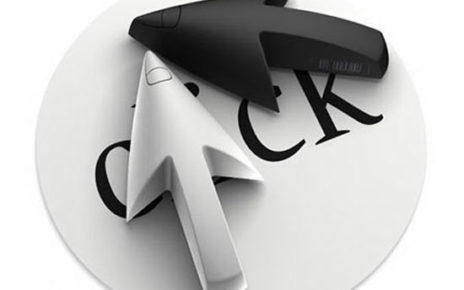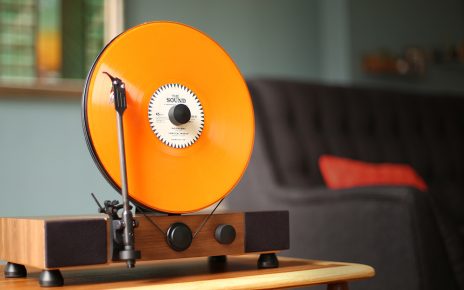Stephen Moramarco’s debut film, The Great Intervention, is the epitome of low-budget indie filmmaking. He made this full-length feature for only $5000. Steve will be sharing his own insights and tips on the current DIY revolution in filmmaking.
Stephen Moramarco (R) on the set (aka his backyard) of The Great Intervention (photo by Leva)
UM: Hi Steve. What is The Great Intervention about?
SM: I shy away from the term “mockumentary”. I like to think of it as a “Romantic Comedy Shot in Documentary Style.” Anyway, the film is about a 40-something artist who’s in a state of deep delusion and his parents try to stage an intervention on him. But it’s not about drugs or alcohol – it’s more about life choices.
Here’s an extended summary…[from his site]
“Steve Moramarco, a single, unemployed 40-something actor-musician, thinks he has finally been discovered by a documentary film crew after years of languishing in obscurity.
A few minutes into the film, we discover that it is his parents who are behind this, in an attempt to collect evidence for a Life Intervention.
We follow Steve, his parents, his best friend and his former girlfriends as they all lurch towards the day that will forever after be known as The Great Intervention.”
UM: Hmmm, this sounds a bit familiar. You’re a 40-something artist, he’s a 40-something artist. Is this based on your personal life?
SM: Some of the elements in The Great Intervention are true – I do play a “version” of myself in the movie, a bit more of a loser, and the actual events are fictional. I like to think of it as an Albert Brooks or (early) Woody Allen movie, where they are also playing versions of themselves in a fictional setting.
Before I came up with the idea for the movie, I was in a horrible depression. Life was just not going the way I wanted it – I think a lot of people can relate. Being an artist is incredibly tough and for most of us it gets harder as we get older. We start questioning our goals and our dreams, and many of us just give up. Then, over a long period of time, I was able to re-evaluate myself, get myself off medications, and take control of my life again. A lot of it is due to creating this film in my head and “acting out” some of my greatest fears. When I was at the bottom, I wondered what would happen if my parents tried to stage an intervention on me? But I didn’t want it to be about drugs or alcohol – I wanted to be more about life choices. From there, the whole story slowly unfolded in my mind.
UM: So…did you really just spend $5,000 on making this film? Is that even possible?
SM: Yes. When I imagined the movie, I also did a mental assessment of what I would need in terms or locations, props and characters. I purposely designed the film to be shot for such a low budget.
I see. But isn’t this a bad thing?
I think it’s essential when you’re planning on producing your own movie. Every line of action in the script is a potential chunk of change. If you write in three car chases, or even a scene at a rock concert, you are going to have to pay for all of that. Make sure it’s essential to the story and realistic for your budget.
UM: Could you give us a breakdown of how you spent the $5,000?
SM: All the locations were free – a lot of it was shot at my house, and most of the actors were friends, or, the case of my father, family.
But there were some hard costs, notably production insurance (about $625) and pay for my SAG actors ($100 a day). Actually, my final SAG paperwork indicated I only spent $4300 – here is my breakdown. Cast: $1800 Crew: $1000 (included cameraman with camera) Costumes: $300 Insurance: $600 Props: $100 Food: $200 DV Tape: $100 Gas: $100 Misc: $100
TOTAL: $4300
UM: Woah! But what about the lights, wardrobe,…?
SM: Since this was shot “documentary style” that means there was no need for a lighting crew, set decorator or costumes. I let the actors pick and choose costumes, for the most part, modifying things here and there as I needed. I also tried to avoid doing too many takes or rehearsals, in order to keep it as real as possible. I even worked in to the narrative that the film was being made by amateur filmmakers, so I could make it look purposefully bad.
UM: Brilliant. I guess you won’t be spending a lot if you want it to have the “purposefully bad” look.
SM: There is method to my Badness.
UM: Some of your actors worked pro-bono and your locations are free. Did you have a hard time directing them? I mean, you can’t be too demanding especially since they don’t charge you anything.
SM: You definitely have to be respectful of both, but you also have to take charge. I think for actors and property owners, the worst thing you can do is act timid. You’re the director! They want to see you moving things along, telling them what to do, etc. You shouldn’t be mean about it, of course, but you all have a job to do, and unless someone’s the boss, it’s not going to get done in a timely fashion.
UM: That’s so true. I will keep that in mind next time I get shy. Now what about your post-production expenses?
SM: I edited the film myself. The editing of the film, which I did on Final Cut Pro, took about 6 months, working almost every day. I am also a musician, so I was able to use my own original music for much of the film. Not everybody is going to be able or want to edit and/or score your movie, but that is an option nowadays that can help save you a lot of money. I had many years experience editing wedding videos, which can be very meticulous and demanding. I learned how to edit very quickly and find the “nuggets.” A first-time editor will have a difficult time with a feature, of course. But that’s why, with everything, you start out small. A short film, a music video. Anything to help you learn the software.
UM: And what about promotion? This costs a lot of money. How did you promote your film with zero budget?
SM: Ahhh, that is the big dilemma, something that a lot of filmmakers face. You spend all this money on making a film, and then you have no money left to promote it! This can be a problem when you’ve spent tens of thousands of dollars on your film. Once you get in to those kinds of numbers, you need/want to probably spend tens of thousands on marketing/publicity.
But I wasn’t trying to make one of those films. Of course I want it to be successful and get in Sundance and be as big as Napoleon Dynamite, but I also am trying to be realistic. As I outlined in one of my blog posts, I am spending as little money on promotion as possible. It just doesn’t make sense. There are a lot of opportunities on the web to market your film for free. Especially because it is my first feature, the experience of doing it is enough, and if it becomes a hit on top of that, well then I’ve done even better.
That being said, I have finally locked down the premiere date for the movie – Sept 26 in Los Angeles at the Downtown Independent, and I will be doing a big “push” with all available resources: my cast and crew, my family and friends, local podcasts, blogs, and radio. I am also planning a publicity stunt or two…
UM: Well you’ve certainly done more than “even better”, Steve. It is premiering in Los Angeles at the Downtown Independent and not only that, your film also serves as a great example of low-budget filmmaking.
SM: The only reason to do anything is to amuse oneself. I am having a good time.
UM: Amen to that!
More about Steve: Steve is 44 years old and has been an actor/performer/writer for most of his life. He went to UCLA and majored in Theater. In college is also where he began making music seriously. His self-released indie CD Hill of Beans was a top-ten hit on college radio and the song “Satan, Lend Me a Dollar” was featured on Showtime’s Weeds. He currently fronts the ten-piece Soul/Punk/Swing band, The Abe Lincoln Story.




